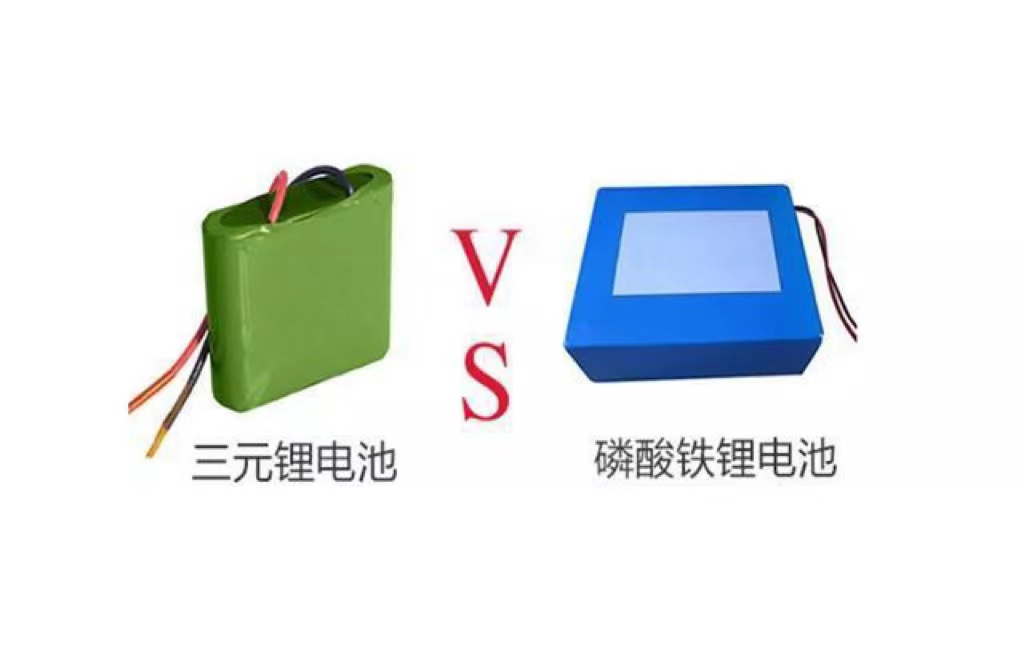In today's new energy era, the development of lithium battery technology is advancing rapidly. Among them, Lithium Iron Phosphate (LFP) batteries and Ternary Lithium batteries have become the two mainstream choices in the market due to their unique performance characteristics. This article will delve into the advantages and disadvantages of these two types of batteries to assist you in making wiser decisions when selecting the appropriate battery technology.

Advantages and Disadvantages of Lithium Iron Phosphate (LFP) Batteries:
Advantages:
- Long Lifespan: LFP batteries have a cycle life far exceeding that of Ternary Lithium batteries, reaching 3000-5000 cycles, while Ternary Lithium batteries generally only have 2000-3000 cycles. This means LFP batteries have a clear advantage in long-term use and low maintenance cost applications.
- High Safety: LFP batteries have better thermal stability, and the probability of thermal runaway under high temperature or overcharge conditions is extremely low, making them suitable for fields with strict safety requirements.
- Cost-Effective: LFP batteries do not contain precious metals, and their raw material prices are relatively low, resulting in lower manufacturing costs. This makes vehicles equipped with LFP batteries potentially more affordable.
- Environmentally Friendly: LFP batteries are relatively environmentally friendly, with abundant resources of phosphate iron and a mining process that has less impact on the environment, aligning with the concept of sustainable development.
Disadvantages:
- Lower Energy Density: The energy density of LFP batteries is usually lower than that of Ternary Lithium batteries, which may affect the driving range of electric vehicles.
- Poor Low-Temperature Performance: The activity of LFP batteries is greatly reduced in low-temperature environments, significantly affecting the driving range of vehicles. Under the same winter conditions, the range compliance rate of LFP battery vehicles is only 50%, while that of Ternary Lithium batteries can reach 70%.
- Slower Charging Speed: The charging speed of LFP batteries is relatively slow, which may affect the driving experience.
Advantages and Disadvantages of Ternary Lithium Batteries:
Advantages:
- High Energy Density: Ternary Lithium batteries generally have higher energy density than LFP batteries, meaning they can store more electrical energy in the same volume or weight, providing a longer driving range.
- Faster Charging Speed: Ternary Lithium batteries charge faster, which is a significant advantage for fast-paced lifestyles.
- Good Low-Temperature Performance: Under low-temperature conditions, Ternary Lithium batteries perform better than LFP batteries. At -20°C, Ternary Lithium batteries can release 70.14% of their capacity, while LFP batteries only support the release of 54.94% of their capacity.
Disadvantages:
- Relatively Lower Safety: Ternary Lithium batteries may experience thermal runaway under extreme conditions such as overcharge, over-discharge, or short circuit, leading to safety incidents.
- Higher Cost: Due to the price fluctuations of raw materials like cobalt, the cost of Ternary Lithium batteries is relatively high, which may affect the selling price of electric vehicles.
- Environmental Impact: The environmental impact of Ternary Lithium batteries should not be ignored, as the mining process of materials like nickel and cobalt has a significant impact on the ecological environment.
In summary, LFP and Ternary Lithium batteries each have their strengths and weaknesses. The choice between them should be based on specific applications, budget, and requirements for safety and service life. LFP batteries, with their long lifespan, high safety, and cost-effectiveness, dominate in fields such as electric buses, large-scale energy storage systems, and home energy storage; while Ternary Lithium batteries, due to their high energy density and low-temperature performance, are more favored in applications requiring high energy output and long endurance, such as electric cars and autonomous vehicles. Understanding these characteristics is undoubtedly the first step in making the best choice.
Welcome to learn about Shenzhen Yuanxin Trade Co., Ltd., a high-tech enterprise thriving in the new energy field. Since its establishment, the company has been committed to becoming a leader in the RC model battery industry, providing customers with the highest quality products and services.
In today's new energy era, the development of lithium battery technology is advancing rapidly. Among them, Lithium Iron Phosphate (LFP) batteries and Ternary Lithium batteries have become the two mainstream choices in the market due to their unique performance characteristics. This article will delve into the advantages and disadvantages of these two types of batteries to assist you in making wiser decisions when selecting the appropriate battery technology.

Advantages and Disadvantages of Lithium Iron Phosphate (LFP) Batteries:
Advantages:
- Long Lifespan: LFP batteries have a cycle life far exceeding that of Ternary Lithium batteries, reaching 3000-5000 cycles, while Ternary Lithium batteries generally only have 2000-3000 cycles. This means LFP batteries have a clear advantage in long-term use and low maintenance cost applications.
- High Safety: LFP batteries have better thermal stability, and the probability of thermal runaway under high temperature or overcharge conditions is extremely low, making them suitable for fields with strict safety requirements.
- Cost-Effective: LFP batteries do not contain precious metals, and their raw material prices are relatively low, resulting in lower manufacturing costs. This makes vehicles equipped with LFP batteries potentially more affordable.
- Environmentally Friendly: LFP batteries are relatively environmentally friendly, with abundant resources of phosphate iron and a mining process that has less impact on the environment, aligning with the concept of sustainable development.
Disadvantages:
- Lower Energy Density: The energy density of LFP batteries is usually lower than that of Ternary Lithium batteries, which may affect the driving range of electric vehicles.
- Poor Low-Temperature Performance: The activity of LFP batteries is greatly reduced in low-temperature environments, significantly affecting the driving range of vehicles. Under the same winter conditions, the range compliance rate of LFP battery vehicles is only 50%, while that of Ternary Lithium batteries can reach 70%.
- Slower Charging Speed: The charging speed of LFP batteries is relatively slow, which may affect the driving experience.
Advantages and Disadvantages of Ternary Lithium Batteries:
Advantages:
- High Energy Density: Ternary Lithium batteries generally have higher energy density than LFP batteries, meaning they can store more electrical energy in the same volume or weight, providing a longer driving range.
- Faster Charging Speed: Ternary Lithium batteries charge faster, which is a significant advantage for fast-paced lifestyles.
- Good Low-Temperature Performance: Under low-temperature conditions, Ternary Lithium batteries perform better than LFP batteries. At -20°C, Ternary Lithium batteries can release 70.14% of their capacity, while LFP batteries only support the release of 54.94% of their capacity.
Disadvantages:
- Relatively Lower Safety: Ternary Lithium batteries may experience thermal runaway under extreme conditions such as overcharge, over-discharge, or short circuit, leading to safety incidents.
- Higher Cost: Due to the price fluctuations of raw materials like cobalt, the cost of Ternary Lithium batteries is relatively high, which may affect the selling price of electric vehicles.
- Environmental Impact: The environmental impact of Ternary Lithium batteries should not be ignored, as the mining process of materials like nickel and cobalt has a significant impact on the ecological environment.
In summary, LFP and Ternary Lithium batteries each have their strengths and weaknesses. The choice between them should be based on specific applications, budget, and requirements for safety and service life. LFP batteries, with their long lifespan, high safety, and cost-effectiveness, dominate in fields such as electric buses, large-scale energy storage systems, and home energy storage; while Ternary Lithium batteries, due to their high energy density and low-temperature performance, are more favored in applications requiring high energy output and long endurance, such as electric cars and autonomous vehicles. Understanding these characteristics is undoubtedly the first step in making the best choice.
Welcome to learn about Shenzhen Yuanxin Trade Co., Ltd., a high-tech enterprise thriving in the new energy field. Since its establishment, the company has been committed to becoming a leader in the RC model battery industry, providing customers with the highest quality products and services.














